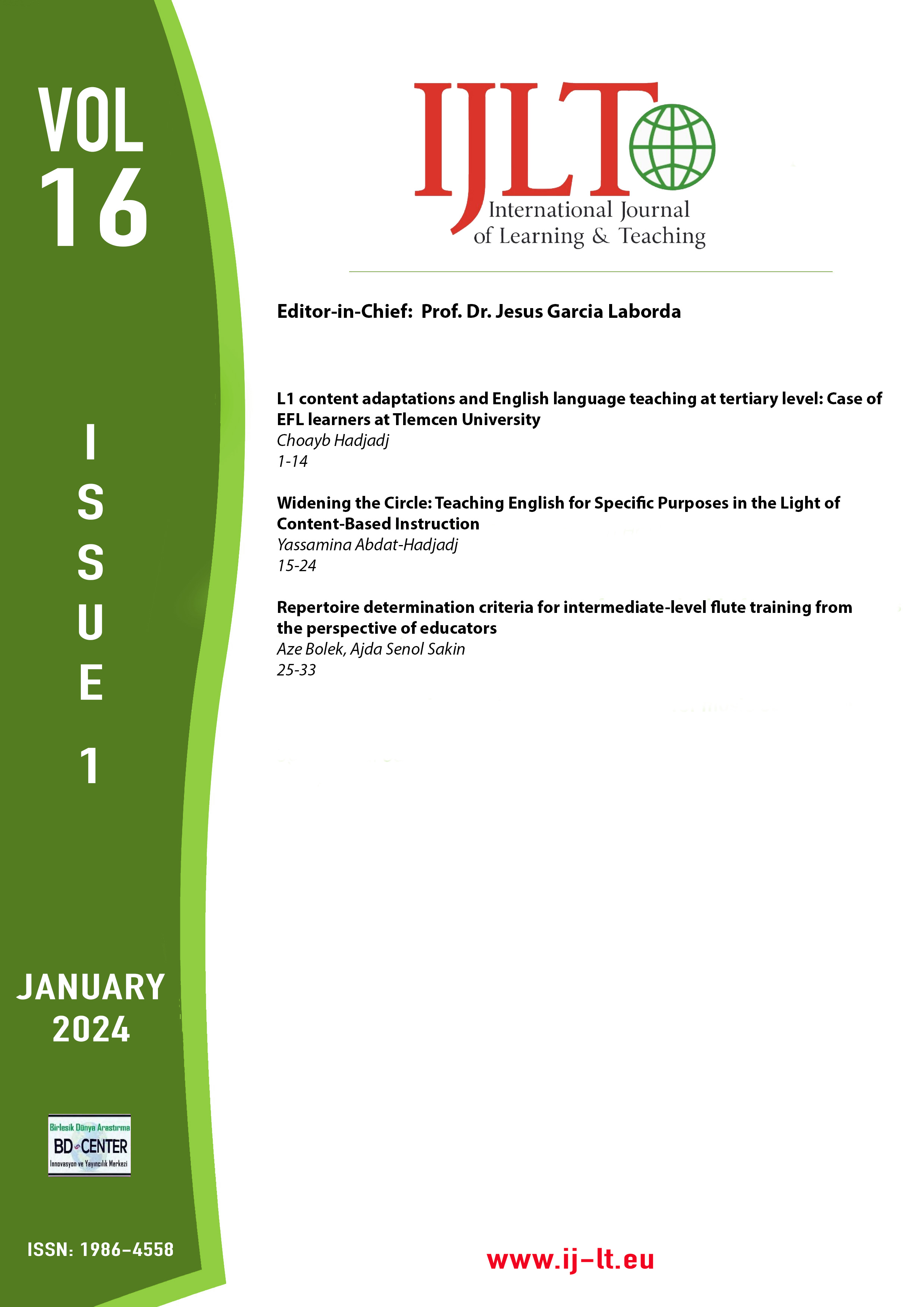Repertoire determination criteria for intermediate-level flute training from the perspective of educators
Main Article Content
Abstract
This research aims to determine the repertoire determination criteria for intermediate-level flute training from the perspective of educators and thus contribute to flute educators who are new to the profession. In the research, case study design, one of the qualitative research methods, was adopted. To collect data for the research, a semi-structured interview form was prepared after the literature review, and the interview form was finalized by taking the opinions of three experts in the field of flute training. In the research, data was collected face-to-face and online. The data obtained was analyzed using the content analysis method. The level defined as intermediate level within the scope of the research covers the 2nd - 3rd years of flute education. In this context, findings were obtained regarding the difficulties experienced by educators in choosing intermediate-level repertoire, repertoire determination criteria, the pieces they used (studied), their processes of deciding on new pieces, and their suggestions on this topic. It was concluded in the research that the participants took the student level and technical support for musical development as criteria when determining the repertoire in intermediate-level flute education. In line with the results, it is recommended to increase studies on note printing in Turkey.
Keywords: Flute, flute training, repertoire determination criteria.
Downloads
Article Details

This work is licensed under a Creative Commons Attribution-NonCommercial-NoDerivatives 4.0 International License.
Authors who publish with this journal agree to the following terms:
- Authors retain copyright and grant the journal right of first publication with the work simultaneously licensed under a Creative Commons Attribution License that allows others to share the work with an acknowledgement of the work's authorship and initial publication in this journal.
- Authors are able to enter into separate, additional contractual arrangements for the non-exclusive distribution of the journal's published version of the work (e.g., post it to an institutional repository or publish it in a book), with an acknowledgement of its initial publication in this journal.
- Authors are permitted and encouraged to post their work online (e.g., in institutional repositories or on their website) prior to and during the submission process, as it can lead to productive exchanges, as well as earlier and greater citation of published work (SeeThe Effect of Open Access).
